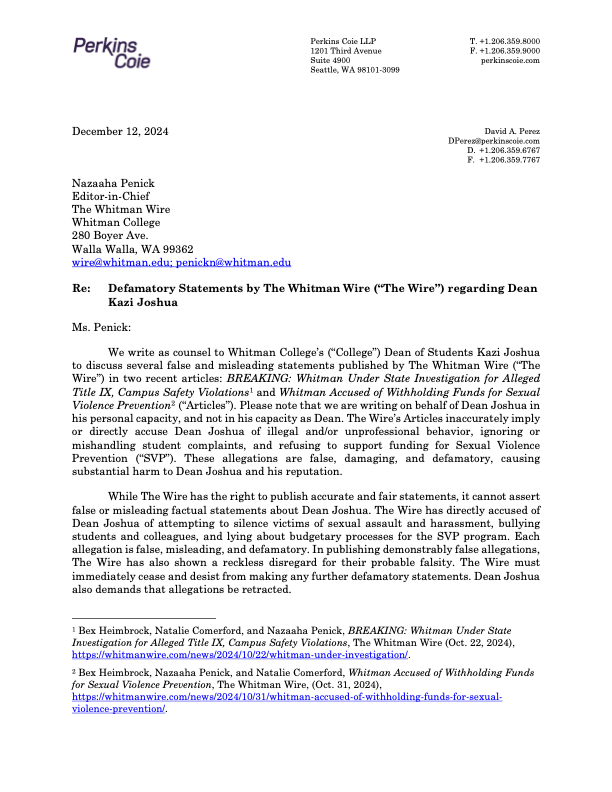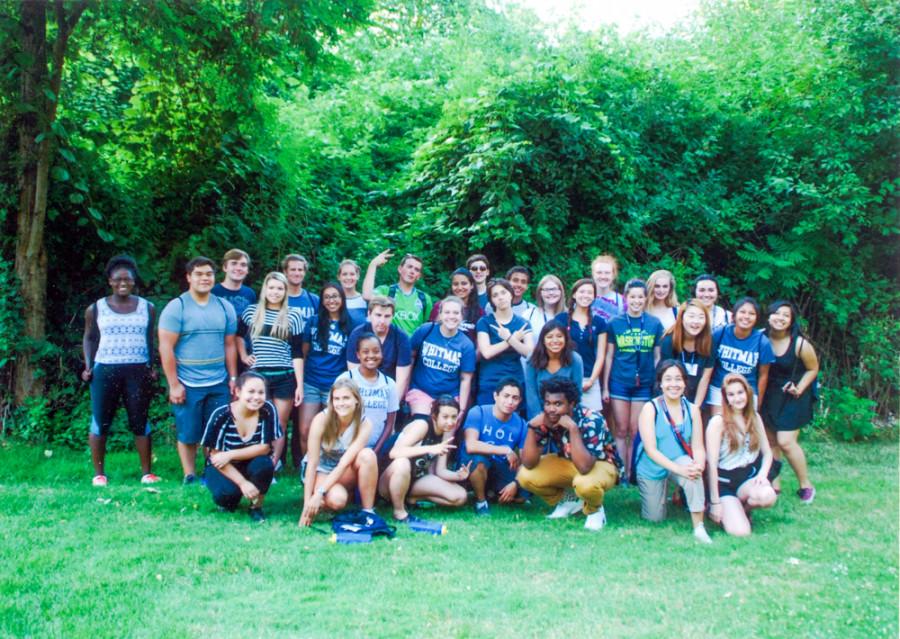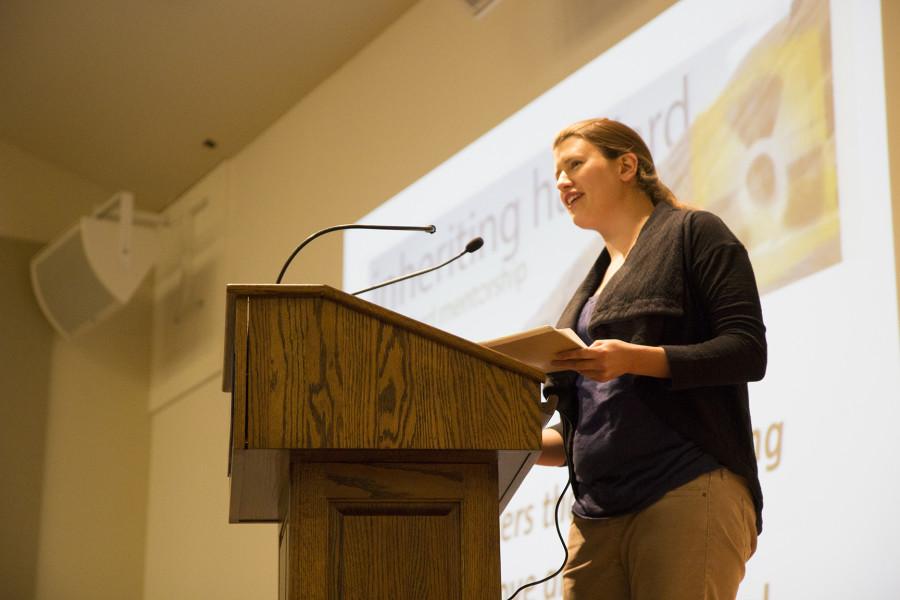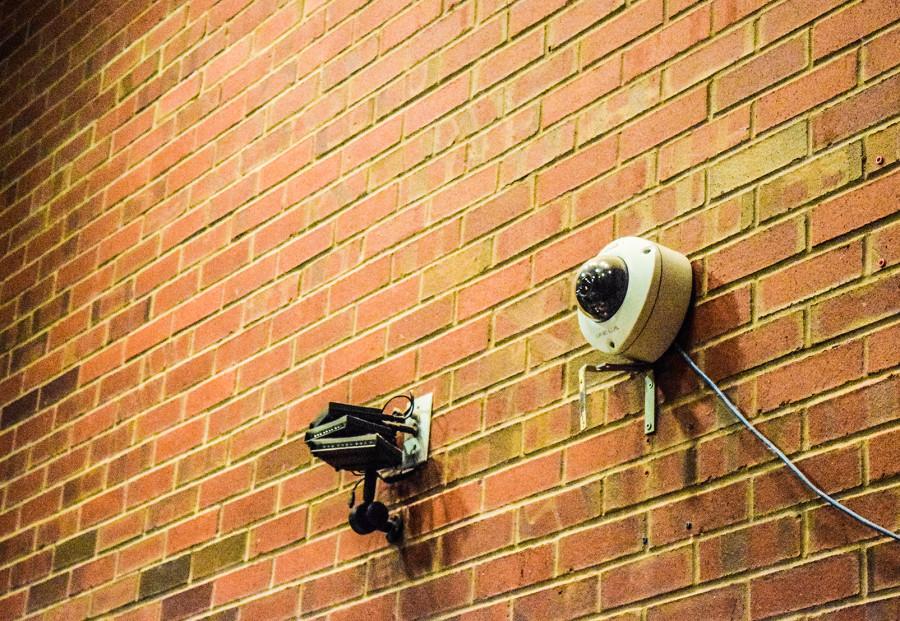
A rising student fee combined with cuts to select clubs’ budgets last spring impacted student life on campus this fall, as organizations such as Waiilatpu and Whitman Direct Action struggled to adjust to increased austerity at Whitman.
While Associated Students of Whitman College (ASWC) funding has remained relatively stable for the last five years, in previous decades, spending increased significantly beyond inflation, and the recent budget crunch raises the question of whether this austerity is the beginning of a longer trend.
ASWC is working to alleviate pressure from clubs and smooth out issues with the lifecycle fund, which contributed heavily to last year’s budget decreases. The student fee increased faster than inflation throughout the 1990s and 2000s, but spending increases have leveled off since 2008. This financial discipline coincided with a larger shift within ASWC towards more organization and professionalism. When funding pressures began to increase again two years ago, the ASWC finance committee realized spending needed to be allocated differently than with past committees.
“Last year and this year our finance committees have been a little more conservative in allocating funds because we have seen towards the end of the year [that] ASWC funds have been drained, and then we haven’t had money to fund projects,” said ASWC Finance Chair Tatiana Kaehler. “That’s been a bit of a wake-up call for us, especially last year.”
The Question of Peak Funding
One of the major causes of a recent spending crunch has been increased demand from clubs. For the 2011-2012 budget, clubs requested a total of $51,380, but requests made last spring for this year’s budget totaled $67,501. While records are not complete, it is likely that this year also set the record for the number of clubs on campus asking for funding from ASWC.
“I don’t think there is a limitation to how many clubs we can have that are ASWC-recognized, it just increases the burden on the [ASWC] Finance Committee if they decide to request funding,” said ASWC Club Director Nate Higby.
The issue ASWC faces with clubs is not their number, but the amount of funding each club requests. While small clubs requesting only a few hundred dollars are unlikely to face long-term budget pressure, those which demand high levels of funding for things such as travel or expensive equipment will likely receive only partial funding and have to seek additional sources of revenue.
“A lot of the clubs we have on campus serve the need of helping students participate in hobbies that are on the more expensive side,” said Kaehler. “[ASWC’s been discussing] the need for students who are participating in expensive activities to put some of their own money into it because ASWC cannot be the funder of really expensive hobbies.”
To prevent the shortfalls seen last year, Kaehler is taking steps to shift funding away from club budgets and towards the Travel and Student Development Fund (T&SD). By forcing clubs to apply separately for additional funds for travel or expensive projects, rather than funding these projects directly in the annual budget, the finance committee hopes to identify areas such as airfare, hotel costs and publicity, where costs may be trimmed down.
“It really is to clubs’ benefits to submit a [lower] request, because then more money can go to their club and to other clubs on campus,” said Kaehler.
Applying through T&SD has worked well so far, but concerns exist over whether the new strategy will be able to save enough funds to assist travel in the spring. A lack of direct control over funding for trips has left the leadership of traveling organizations such as Model United Nations and GlobeMed unsure how many members will be able to attend events.
“Some students do not feel comfortable committing to [going to a conference] without knowing in advance whether they will be able to get the money, which definitely limits the people who want to go,” said senior GlobeMed co-President Kate Runkel.
While a decade ago ASWC’s response to more demand may have been to raise the student fee, its modern incarnation is hesitant to view that as a one-stop solution. With tuition from the college still rising steeply, ASWC has realized that pushing the costs on to students is not a sustainable answer.
“I definitely think there’s a limit to how much ASWC can do, [and] as ASWC continues to feel pressure from clubs and interests on campus that want to receive funding, it’s going to be very difficult to lower the student fee,” said Kaehler. “It’s going to reach a point where [the student fee] can’t be increased except for inflation.”
Protecting the Lifecycle Fund
Another major contributor to this year’s budget austerity is the neglect of the Lifecycle Fund, which is used to replace equipment and technology for ASWC and campus media organizations. When it was conceived, the Lifecycle Fund was intended to have a small amount of money deposited each year to spread out long-term costs; however, the fund was neglected since 2009, and last year ASWC had to find a way to pay $24,000 all at once.
To make sure the lifecycle fund is not ignored again, last year’s finance chair alumnus Sam Sadeghi ’13 advocated to write into the ASWC by-laws that two percent of the yearly budget be set aside for the Lifecycle Fund. While this slightly decreases the flexibility of year-to-year spending, it ensures the Lifecycle Fund will never be forgotten again. Because the consequences of not giving to Lifecycle were not felt until several years later, it was tempting in past years to use funds to address more immediate pressures such as spending on clubs and T&SD.
“With the frequent turnover of leadership, it would be so easy for ASWC to fall into the same mistakes,” said Kaehler. “I think that’s why it’s so important for finance chairs to try to implement by-law provisions and make structural changes that are permanent.”
Avoiding the Past
While a look at the last two years may suggest ASWC is once again entering a period of financial growth as seen in decades past, the financial discipline seen in the creation of new regulations suggest this is not the case. Some of the increases seen in the ‘90s and 2000s may be attributed to events which are unlikely to occur again, such as the explosion of student interest in activities and club sports, the founding of the T&SD Fund and the creation of the Whitman Events Board. WEB takes up the largest single portion of the ASWC budget and received $165,000 in this year’s budget.
“When the Whitman Events Board [WEB] was commissioned, that was when the college began cutting its support for events on campus … We started absorbing a lot of the costs that the college used to absorb for on-campus events,” said senior senator and former ASWC President Kayvon Behroozian.
The finance committee is attempting to find a balance between raising the fee and reining in spending. ASWC remains open to student opinion on the matter, and pressure in either direction could shift their policy.
“It’s important for the student body to recognize that ASWC works for them,” said Kaehler. “We’re working to implement their ideas and to benefit them, so it really is up to the student body to decide what happens with the student fee and how it’s allocated.”
















